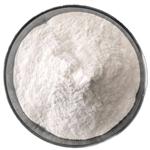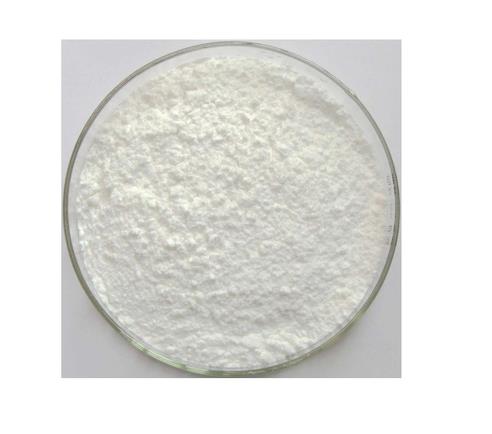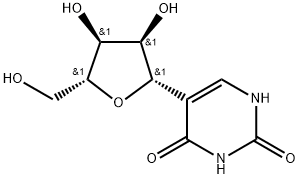Pseudouridine: Application and Pharmacology, Synthesis, Toxicity and safety
Mar 27,2023
General description
Pseudouridine (Ψ;5-ribosyluracil) is a C-glycosyl pyrimidine that consists of uracil having a beta-D-ribofuranosyl residue attached at position 5. The C-glycosyl isomer of the nucleoside uridine. It has a role as a fundamental metabolite. It is a natural product found in Mycoplasma gallisepticum, Saccharomyces cerevisiae, and other organisms with data available. Pseudouridine is a ubiquitous yet enigmatic constituent of structural RNAs (transfer, ribosomal, small nuclear, and small nucleolar). Although pseudouridine was the first modified nucleoside to be discovered in RNA, and is the most abundant, its biosynthesis and biological roles have remained poorly understood since its identification as a “fifth nucleoside” in RNA.
Application and Pharmacology
Pseudouridine (Ψ) is the most common RNA modification, found in all domains of life, including eukaryotes, bacteria, and archaea. It is found in various types of RNA, including ribosomal RNA, transfer RNA, small nuclear RNA, and small nucleolar RNA. Pseudouridine plays important roles in RNA structure and function. It can stabilize RNA structures, increase the flexibility of RNA molecules, and affect the binding of RNA to proteins. It is also involved in the decoding of genetic information during translation, and in the processing of pre-RNA molecules. The formation of pseudouridine in RNA is catalyzed by pseudouridine synthase enzymes, which are present in all domains of life. There are several different types of pseudouridine synthases, each with a specific RNA substrate and catalytic mechanism.
1. Pseudouridine profiling reveals regulated mRNA pseudouridylation in yeast and human cells. Pseudouridine, the most abundant modified nucleoside in non-coding RNAs1, enhances the function of transfer RNA and ribosomal RNA by stabilizing the RNA structure. Messenger RNAs were not known to contain pseudouridine, but artificial pseudouridylation dramatically affects mRNA function—it changes the genetic code by facilitating non-canonical base pairing in the ribosome decoding centre. However, without evidence of naturally occurring mRNA pseudouridylation, its physiological relevance was unclear[1].

Figure 1 Genome-wide pseudouridine sequencing with single-nucleotide resolution.
2. Pseudouridine as a novel biomarker in prostate cancer. Epitranscriptomic analysis has recently led to the profiling of modified nucleosides in cancer cell biological matrices, helping to elucidate their functional roles in cancer and reigniting interest in exploring their use as potential markers of cancer development and progression. Pseudouridine, one of the most well-known and the most abundant of the RNA nucleotide modifications, is the C5-glycoside isomer of uridine and its distinctive physiochemical properties allows it to perform many essential functions. Pseudouridine functionally (a) confers rigidity to local RNA structure by enhancing RNA stacking, engaging in a cooperative effect on neighboring nucleosides that overall contributes to RNA stabilization (b) refines the structure of tRNAs, which influences their decoding activity (c) facilitates the accuracy of decoding and proofreading during translation and efficiency of peptide bond formation, thus collectively improving the fidelity of protein biosynthesis and (e) dynamically regulates mRNA coding and translation. Biochemical synthesis of pseudouridine is carried out by pseudouridine synthases. Association between elevated pseudouridine levels with the incidence and progression of human prostate cancer and the translational significance of the value of this modified nucleotide as a novel biomarker in prostate cancer progression to advanced disease[2].
3. Recently, a combination of biochemical, biophysical, and genetic approaches has helped to illuminate the structural consequences of pseudouridine in polyribonucleotides, the biochemical mechanism of U to pseudouridine isomerization in RNA, and the role of modification enzymes (pseudouridine synthases) and box H/ACA snoRNAs, a class of eukaryotic small nucleolar RNAs, in the site-specific biosynthesis of W. Through its unique ability to coordinate a structural water molecule via its free N1-H, W exerts a subtle but significant “rigidifying” infiuence on the nearby sugar-phosphate backbone and also enhances base stacking. These effects may underlie the biological role of most (but perhaps not all) of the W residues in RNA. Certain genetic mutants lacking specific W residues in tRNA or rRNA exhibit difficulties in translation, display slow growth rates, and fail to compete effectively with wild-type strains in mixed culture. In particular, normal growth is severely compromised in an Escherichia coli mutant deficient in a pseudouridine synthase responsible for the formation of three closely spaced W residues in the mRNA decoding region of the 23S rRNA. Such studies demonstrate that pseudouridylation of RNA confers an important selective advantage in a natural biological context[3].
Synthesis
Artificial pseudouridylation is the process of introducing pseudouridine into RNA molecules using synthetic methods. There are several synthetic pathways that can be used to produce artificial pseudouridylation, including chemical synthesis and enzymatic approaches. One chemical method for artificial pseudouridylation involves the chemical modification of uridine using a reactive precursor. For example, a commonly used precursor is 5,6-dihydrouridine (DHU), which can be chemically modified to form pseudouridine. This method requires careful control of the reaction conditions, including pH, temperature, and reactant concentration. Enzymatic approaches for artificial pseudouridylation involve the use of engineered enzymes that can catalyze the isomerization of uridine to pseudouridine. These enzymes can be engineered using a variety of techniques, including directed evolution, rational design, and computational methods. For example, some researchers have used directed evolution to evolve RNA-modifying enzymes that can introduce pseudouridine into RNA with high efficiency and specificity. Another enzymatic approach for artificial pseudouridylation involves the use of RNA-guided pseudouridine synthases, which are derived from the CRISPR/Cas system. These enzymes can be used to introduce pseudouridine into RNA in a sequence-specific manner, by targeting a specific sequence within the RNA molecule. This approach offers a highly specific and programmable method for introducing pseudouridine into RNA. Overall, the synthetic pathways for artificial pseudouridylation are still being developed and optimized. However, these methods hold promise for enabling the study of pseudouridylation in RNA and for developing new RNA-based therapies and technologies.
Toxicity and safety
The safety and toxicity of artificial pseudouridylation, particularly when introduced into therapeutic RNA molecules, may need to be evaluated on a case-by-case basis. Some potential concerns related to the safety of artificial pseudouridylation include the possibility of off-target effects, immune responses, and unintended changes to RNA structure and function. To address these concerns, safety evaluation of artificial pseudouridylation may include in vitro and in vivo studies to assess the effects of modified RNA molecules on cellular function, toxicity, and immunogenicity. This may involve the use of cell-based assays, animal studies, and clinical trials. In addition, regulatory bodies such as the US Food and Drug Administration (FDA) and the European Medicines Agency (EMA) have established guidelines for the safety evaluation of RNA-based therapeutics, including those modified with pseudouridine. These guidelines may require preclinical safety studies and rigorous evaluation of the efficacy and safety of modified RNA molecules before they can be approved for clinical use.
Reference:
1.
2.
3.
- Related articles
- Related Qustion
- Pseudouridine: Evolution and Functions Mar 21, 2024
Pseudouridine, discovered in the 1950s, plays vital roles across various RNA types, influencing RNA integrity, ribosome function, tRNA structure, and genetic code dynamics.
Heptane is the straight-chain alkane, and is one of the main components of gasoline, which is widely used in laboratories as a non-polar solvent.....
Mar 24,2023SupplementsThe 2-Dicyclohexylphosphino-2',6'-diisopropoxybiphenyl is a kind of phosphine ligand which can be used for he palladium catalyzed cross coupling reaction.....
Mar 27,2023Organic Synthesis IntermediatePseudouridine
1445-07-4You may like
- Pseudouridine
-

- $0.00 / 100g
- 2024-02-06
- CAS:1445-07-4
- Min. Order: 10g
- Purity: 99.5%
- Supply Ability: 100kg monthly
- Pseudouridine
-

- $0.00 / 10g
- 2023-05-10
- CAS:1445-07-4
- Min. Order: 10g
- Purity: 98%
- Supply Ability: 100kg
- Pseudouridine
-

- $0.00 / 1kg
- 2023-03-20
- CAS:1445-07-4
- Min. Order: 0.05000000074505806kg
- Purity: 99% HPLC
- Supply Ability: 5tons





